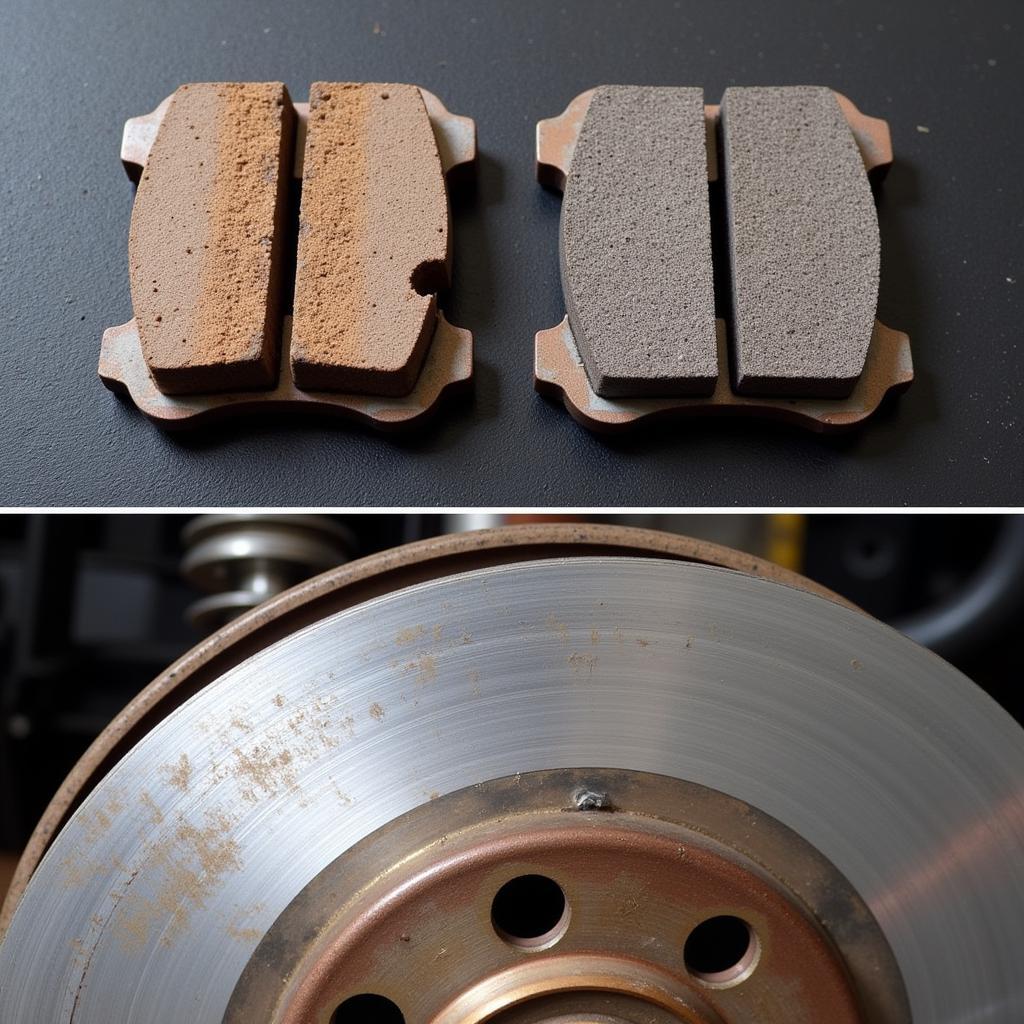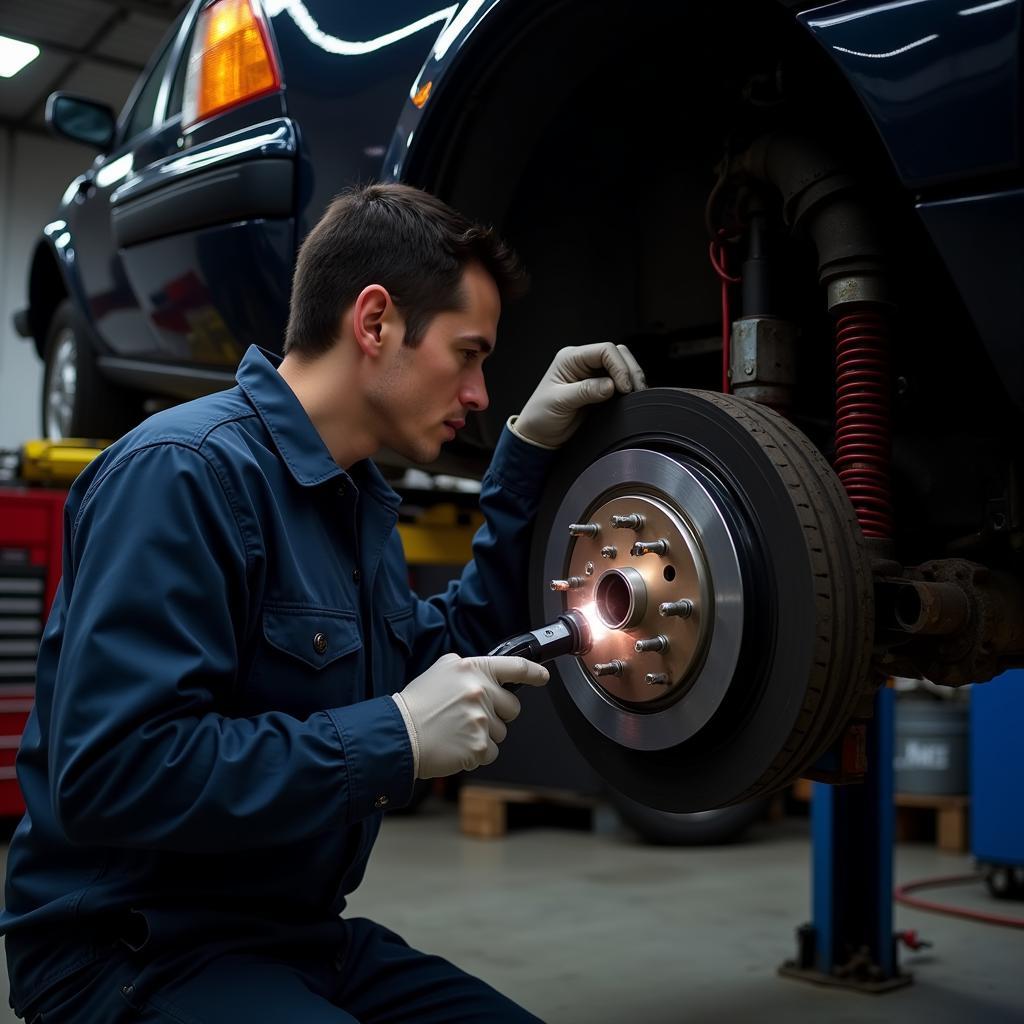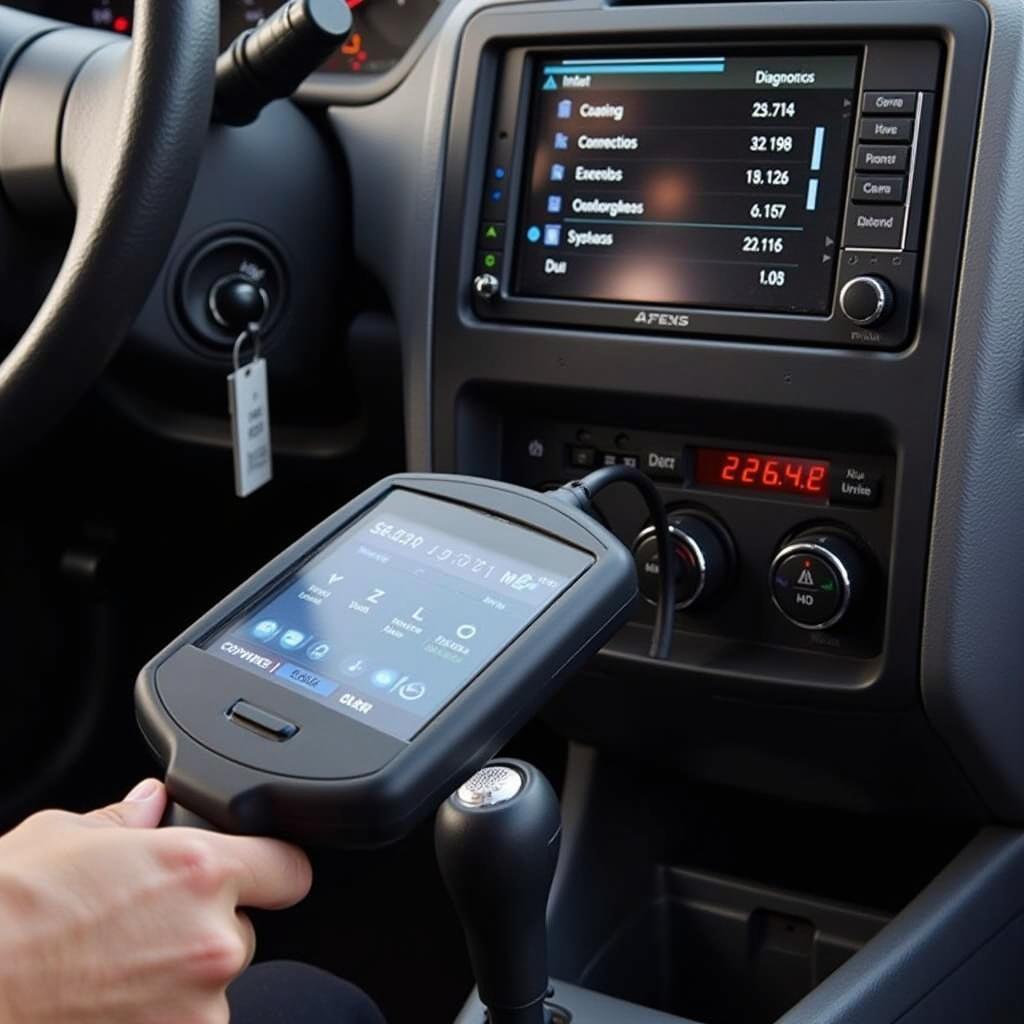Warning signs brake issues are crucial for maintaining vehicle safety. Ignoring these signals can lead to costly repairs and dangerous driving situations. This comprehensive guide will help you understand your vehicle’s brake system, recognize warning signs, and take appropriate action.
Brake systems are complex and rely on various components working together seamlessly. Understanding these components will empower you to better diagnose potential problems. Key components include the brake pedal, master cylinder, brake lines, calipers, rotors, and brake pads. The brake pedal initiates the braking process, transmitting force to the master cylinder which then pressurizes the brake fluid. This pressurized fluid travels through the brake lines to the calipers, which squeeze the brake pads against the rotors, creating friction and slowing the vehicle.
 Worn Brake Pads and Rotor
Worn Brake Pads and Rotor
Recognizing the Warning Signs Brake Trouble
There are several warning signs brake problems you should be aware of. These include a squealing or grinding noise when braking, a soft or spongy brake pedal, a pulsating brake pedal, a pulling sensation when braking, and of course, an illuminated brake warning light. Any of these symptoms warrant immediate attention. Don’t hesitate to take your vehicle to a qualified mechanic for diagnosis and repair.
What Does a Brake Warning Light Indicate?
The brake warning light can indicate several issues, including low brake fluid, a problem with the ABS (Anti-lock Braking System), or a malfunction in the brake system itself. A low brake fluid level is a serious issue that can compromise your ability to stop effectively. ford transit brake pad warning light reset provides helpful resources for specific vehicle models.
“Ignoring a brake warning light is like ignoring a ticking time bomb,” says John Smith, ASE Certified Master Technician. “It’s crucial to address the issue immediately to prevent further damage and ensure your safety on the road.”
Common Brake Problems and Solutions
Common brake problems include worn brake pads, warped rotors, leaking brake fluid, and faulty calipers. Worn brake pads are a routine maintenance item and should be replaced regularly. Warped rotors can cause a pulsating brake pedal and require resurfacing or replacement. 2015 ford transit brake pad warning light reset is a valuable resource if you own this specific vehicle. Leaking brake fluid is a dangerous situation and needs to be addressed immediately.
How to Maintain Your Brakes
Regular brake maintenance is essential for optimal performance and safety. This includes regular brake inspections, fluid flushes, and timely replacement of worn components. 2014 ford transit brake pad warning light reset can offer guidance for specific Ford Transit models. “Preventative maintenance is key to avoiding costly brake repairs down the road,” advises Sarah Johnson, automotive engineer and brake system expert. “Regular checks and timely replacements can save you time, money, and most importantly, keep you safe.”
Remote Diagnostics and Programming
Advancements in technology now allow for remote diagnostics and programming, offering efficient solutions for certain brake system issues. ford transit 2016 brake pad warning light reset is a helpful resource for owners of this particular model. This technology can sometimes identify and resolve software-related brake problems without requiring a physical visit to a mechanic. ford transit brake warning light reset provides further information on this topic.
In conclusion, recognizing warning signs brake trouble is paramount for safe driving. Understanding your brake system, performing regular maintenance, and addressing issues promptly can prevent costly repairs and ensure your safety on the road. Don’t ignore those warning signs – take action and keep your brakes in top condition!
FAQ:
- What should I do if my brake warning light comes on?
- How often should I have my brakes inspected?
- What is the difference between ABS and non-ABS brakes?
- What causes a spongy brake pedal?
- How can I tell if my brake rotors are warped?
- What is the average lifespan of brake pads?
- How much does it typically cost to replace brake pads and rotors?



